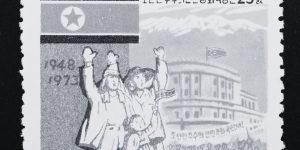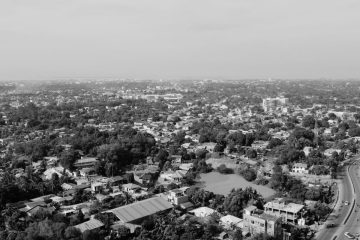What Happened On June 25th?
On June 25, 1950, the Korean Peninsula erupted into a full-scale war as North Korean forces crossed the 38th parallel and launched a surprise attack on South Korea. This invasion began the Korean War, a conflict that reshaped the region for decades.
A Divided Peninsula
Following World War II, Korea was divided along the 38th parallel. The Soviet Union occupied the North, while the United States took control of the South. This division, intended to be temporary, soon hardened into a permanent split as Cold War tensions escalated. The North, under Kim Il-sung, embraced communism with Soviet backing, while the South, led by Syngman Rhee, aligned with the West.
In the years leading up to the war, both Koreas engaged in frequent skirmishes along the border, each claiming legitimacy as the rightful government of the entire peninsula. These clashes, coupled with ideological fervor, set the stage for an even larger confrontation.
North Korea Strikes
At dawn on June 25, 1950, North Korean artillery shattered the early morning calm. The South Korean forces, caught off guard and outnumbered, struggled to mount an effective defense. Within hours, key cities, including the capital Seoul, faced enormous threats.
President Harry S. Truman, informed of the attack, quickly recognized the gravity of the situation. He later recalled, “Communism was acting in Korea just as Hitler, Mussolini, and the Japanese had acted ten, fifteen, and twenty years earlier. I felt certain that if South Korea was allowed to fall, Communist leaders would be emboldened to override nations closer to our own shores.”
North Korean forces used Soviet T-34 tanks during the initial invasion, which outmatched the South Korean military’s largely infantry-based defenses. The tanks played a crucial role in the rapid advance southward.

International Response: The UN Intervenes
The United Nations Security Council condemned the North Korean aggression and called for an immediate ceasefire. With the Soviet Union absent from the vote, the Council passed Resolution 82, urging member states to assist South Korea in repelling the invasion.
On June 27, 1950, President Truman authorized American military intervention under the UN banner. General Douglas MacArthur, a seasoned commander from World War II, led the UN forces. Troops from the United States and other member nations began arriving in Korea, starting a multinational effort to contain the conflict.
The first American ground combat troops to arrive in Korea were part of Task Force Smith, a hastily assembled unit of about 540 soldiers. They engaged North Korean forces at Osan on July 5, 1950, but were quickly overwhelmed due to inadequate preparation and equipment. A soldier from Task Force Smith recalled, “We thought we could stop them with rifles. We were wrong.”
Seoul Falls
By June 28, North Korean forces captured Seoul, dealing a devastating blow to South Korean morale. The rapid advance of the North’s troops, equipped with Soviet-made tanks and artillery, forced South Korean and UN forces into a desperate retreat. The city, engulfed in chaos and panic, witnessed a massive exodus of civilians fleeing southward.
Inchon Landing
On September 15, 1950, MacArthur’s forces executed the daring Inchon landing. Despite the challenges posed by tides, narrow channels, and fortified defenses, the operation succeeded beyond expectations. The UN forces quickly established a beachhead and began their push inland.
MacArthur’s gamble paid off. Within two weeks, UN and South Korean forces recaptured Seoul. This dramatic reversal stunned the North Koreans and shifted the momentum of the war. The recapture of Seoul was not just a military victory but also a psychological boost for the South Korean population.

China Enters The Fray
As UN forces advanced northward, nearing the Yalu River and the Chinese border, Beijing grew increasingly alarmed. On October 19, 1950, Chinese forces, under the guise of volunteers, crossed into North Korea. The intervention caught UN forces by surprise and led to a series of brutal battles in the harsh Korean winter.
The entry of Chinese troops into the conflict transformed the Korean War into a grueling stalemate. The battle lines shifted back and forth, with neither side able to secure a decisive victory. The war’s ferocity and scale brought immense suffering to the Korean people, with millions of civilians displaced and countless lives lost.
During this period, the “Frozen Chosin” campaign stood out, where UN forces, including the US Marines, fought their way out of encirclement by Chinese troops in the brutal cold of the Chosin Reservoir in late 1950. A marine who survived the battle said, “Retreat, hell! We’re not retreating, we’re just advancing in a different direction.”
Stalemate & Armistice
After three years of intense fighting, the Korean War reached a stalemate. On July 27, 1953, an armistice agreement was signed at Panmunjom, establishing the Korean Demilitarized Zone (DMZ) and effectively freezing the front lines at the 38th parallel. The agreement, however, did not result in a formal peace treaty, leaving the Korean Peninsula technically still at war.
The Korean War had profound and lasting impacts. It solidified the division of Korea into two hostile states, a reality that persists to this day. The conflict also set the stage for future Cold War confrontations, reinforcing the global divide between communist and capitalist blocs.





